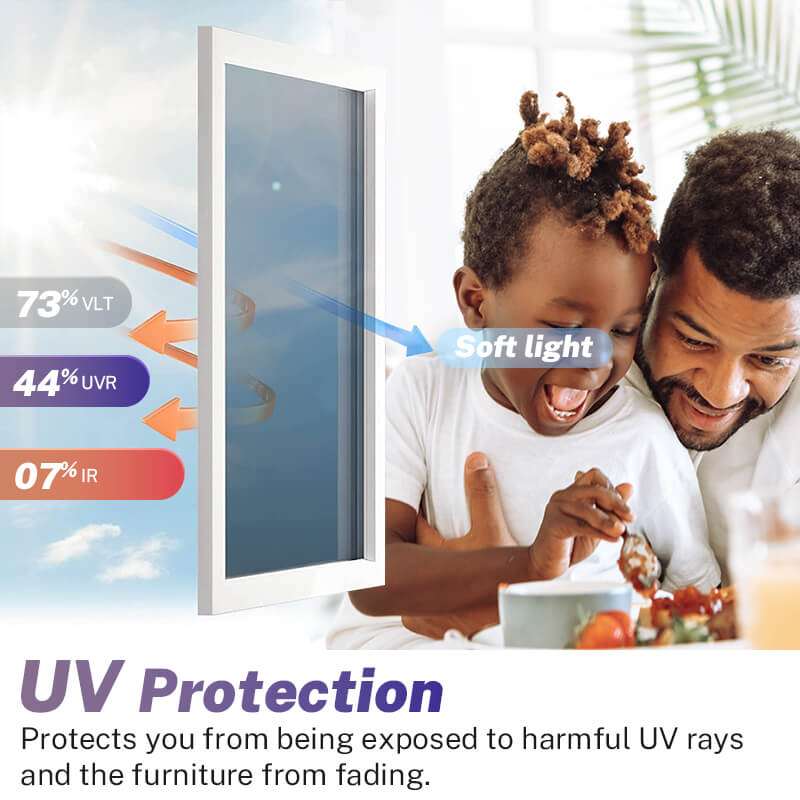As energy costs continue to rise globally, finding effective ways to reduce energy consumption in homes and commercial buildings has become a hot topic. Window Film has emerged as a highly effective solution for improving energy efficiency and significantly lowering long-term energy costs. By blocking solar heat, stabilizing indoor temperatures, and reducing the burden on air conditioning systems, window films have become an essential tool for energy savings in modern homes and buildings. This article will provide a comprehensive analysis of how window film helps save on energy costs, the science behind it, real-life case studies, and how to maximize energy savings through proper installation, guiding you toward making an informed investment decision.
Table of Contents
How Window Film Helps Lower Energy Costs
Window film serves as an intelligent energy-saving product that reduces the amount of solar heat entering a building in the summer and helps retain indoor warmth in the winter. Studies have shown that window film can block up to 80% of solar heat, meaning air conditioning and heating systems have to work less, significantly reducing energy expenses. This energy-saving effect is primarily achieved by reducing the need for cooling and heating. Many users report energy savings of 20-30% in their cooling costs alone after installing window film.
The Science Behind Window Film’s Heat Reduction
The key to window film's effectiveness lies in the special materials used in the film. These films help reduce heat exchange between the interior and exterior of a building by reflecting and absorbing infrared radiation and ultraviolet (UV) rays. This principle is crucial not only in summer to block unwanted heat but also in winter to retain indoor warmth. Low-E films (Low Emissivity Films) enhance this process by reflecting infrared rays back into the room, while still allowing natural light to pass through, thus maintaining a comfortable indoor environment. This makes window film an essential tool for temperature regulation, leading to significant energy savings throughout the year.

Case Study: Homes Achieving Energy Savings with Window Film
Many homeowners have experienced substantial energy savings by installing window film. For instance, a family in the United States saw their air conditioning run time decrease by over 25% after applying safety film for windows . In addition to reduced cooling costs, the window film also prevented UV rays from damaging furniture, carpets, and artwork. This case study demonstrates that window film not only helps save energy but also enhances the overall indoor environment by protecting possessions from UV-induced damage.
Maximizing Energy Savings through Proper Installation Techniques
The quality of installation plays a crucial role in maximizing the energy-saving potential of window film. To achieve optimal results, it is important to select the right type of film, ideally one that combines both solar control and Low-E properties. This ensures that the film addresses both summer heat gain and winter heat loss. Furthermore, professional installation ensures that the film fits perfectly on the windows, preventing air leaks and ensuring long-lasting performance. Regular maintenance, such as cleaning the film and inspecting for any signs of wear, also contributes to maintaining its effectiveness over time.
Cost Comparison: Window Film vs. Other Energy-Saving Solutions
When compared to other traditional energy-saving solutions, window film is an affordable and effective alternative. Replacing windows can be expensive and may require structural modifications to the building. In contrast, the installation of window film is relatively inexpensive and can be done with minimal disruption to the building. Additionally, window film lasts between 10 to 15 years, providing a long-term energy-saving solution with a high return on investment. For many property owners, this makes window film a more cost-effective option compared to other energy-saving methods like window replacement.
Why Choose Window Film for Energy Efficiency
Window film stands out as an outstanding energy-efficient solution that offers long-term cost savings, environmental benefits, and additional protection against UV rays. By reducing solar heat gain and minimizing heat loss, window film lowers the demand for air conditioning and heating, helping to significantly reduce energy costs. Moreover, window film can protect your interior furnishings from UV damage, making it a smart investment for both energy efficiency and asset preservation. Choosing the right window film manufacturers ensures that you receive products that not only enhance energy efficiency but also provide excellent UV protection for your home or commercial space.
Post time: Feb-06-2025





